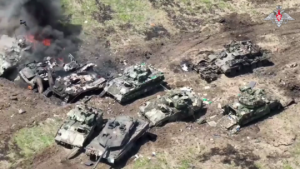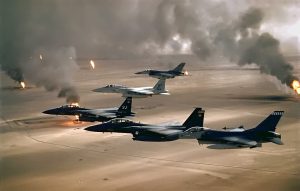‘MERICA
There is a perception in the world, a perception with solid reasoning behind it, that the United States of America is the most powerful nation in the recorded history of the world. In fact, the world system of the early 21st Century is hinged on that very concept.
But – is it true?
Economically, the United States is certainly a powerhouse. As measured by Gross Domestic Product (GDP) the US economy is almost larger than the next three economies in the world. However, in GDP per Capita the US is seventh, and in Purchasing Power Parity (PPP) (a measure of the ratio of the price of a “basket of goods” in different countries, that is used to compare the absolute purchasing power of national currencies), the US is in 10th place. In exports, the US is in second place to China, and even then, the vast bulk of US exports are limited to petroleum, aircraft, pharmaceuticals and medical instruments, due primarily to the high costs of US labor. Dangerously, the imbalance of imports shows that the US is reliant on the willingness of the rest of the world for a vast amount of its real goods, like industrial machinery.
We could talk about how reporting on the quality of education in the US is “cooked”, but we’ll let the World Population Review discuss that.
But really – that’s not why you’re reading this, right? After all, if the Reader has been reading the Freedomist for any length of time, you are fully aware what my focus is. So, let’s go there.
Militarily, the United States Armed Forces possess a set of demonstrated structures that maximize its global reach and power projection…in theory. The state of the US military – and, critically, its supporting industrial base and capacity – is abysmal. This is not a question solely of culture or corruption, although those things are certainly major factors. The issue to keep in mind, here, is that the United States military is an apolitical and a-cultural bellwether for the nation – if the military works, the nation’s political and cultural problems are not insurmountable; conversely, if the military isn’t working, metaphorically speaking, the nation is in danger…How much danger, we will look into below.
Why is the military in the poor state that it is? On the surface, the issues started to became public, albeit in a very quiet way, in 2001…not with the 9/11 attacks, but with the release of the 2001 Quadrennial Defense Review. The 2001 QDR – one of a series of documents issued every 4 years from 1997 to 2017 by and for the Washington, DC bureaucratic swamp that describes a “4-year plan” (…) – was the first to explicitly state the plan to replace the notion of “strategy” (in the historical sense) with “capabilities-based planning”.
Basically, “strategy” was too hard to do effectively in an “asymmetric environment”, where hostile actors could erupt anywhere, at any time, and act in unpredictable ways. So…it followed that traditional strategic planning model no longer functioned. The solution – “capabilities-based planning” – posited the notion that if an issue arose, a “basket” of units with various capabilities appropriate to the nation, region and operational environment could be quickly assembled, and thrown into action, until the problem went away.
Given what should have been the obvious disaster in the making with such a childish idea, it should be no surprise that it failed, miserably, utterly and completely, almost from its first use.
But the problem is much deep than this.
JUNGLE GHOSTS
The United State Armed Forces were badly scarred, in a psychological and cultural sense, by the collapse of the Western effort in the Vietnam War. This is well known. What is not so well known, at least among the general public, is the US military’s responses to the defeat.

The US military, as a group, essentially abandoned “counterinsurgency” in the aftermath of the Vietnam defeat. It had deployed massive forces, conventional and special, which had uniformly fought hard, in a confusing and frustrating environment. And it had failed. In the bizarre world of guerrilla warfare, while US and Allied units won every engagement above the level of the infantry company, they had still lost the war, because South Vietnam had ultimately fallen, seemingly rendering the efforts moot.
The reasons for South Vietnam’s collapse are many, and not the subject for this article. But, the reaction by the US military was to refocus all of its efforts towards very likely fights with the Soviet Union and the People’s Republic of China, in effect, “World War 3”, ala, “World War 2, but with lots more nukes.”
To do this, the US military – primarily the Army – had to rethink its concept of strategy, following the failure of its “Pentomic Army” experiment. The answer seemed to arrive in 1976, when John Boyd, Colonel, USAF (ret.) first presented his “Patterns of Conflict” work, that outlined what is now known as the “OODA Loop”. The OODA concept took the US military establishment by storm in the mid-1970’s, and resulted in two things: the revitalization of the Opposition Force (OPFOR) concept, and in a new battle strategy for winning the conventional side of World War 3 – “AirLand Battle”.
The US military had maintained the idea of an “opposing force” as a training model since 1946; in fact, the Freedomist covered this unique and seminal organization in May of this year. In the late 1970’s, the program was completely overhauled, and centered on a then state of the art training facility at Ft. Irwin, CA, and later at Ft Polk, LA (now renamed as Ft. Johnson), which focused on counterinsurgency as operations in Iraq and Afghanistan shifted in focus, in concert with the US Marine Corps’ facility at 29 Palms, CA. The concept has been maintained and updated over the years. The concept created the most realistic combat training facility ever established, that trained a generation of primarily US Army armor officers and troops in how to fight and win on an armored battlefield. The armored warfare training program fell out of extensive use during the Global War on Terror, as there was little need for massed armored formations after the successful invasion and conquest of Iraq in 2003.
Coupled to the success of the AirLand Battle concept in 1991, it seemed that the US military had recovered from Vietnam, and was back in the dominant position it had seemingly enjoyed since the end of World War 2.

COLLAPSE?
But, lurking beneath the surface, there was a palpable, unsettled feeling – something just didn’t…“feel right”. There was suspicion, whispered in private, that we were actually training potential combat leaders how to “win the battle, but not the war”. Those concerns, however, were mostly forgotten as “bumps in the road” and “just bad luck”, as Iraq and Afghanistan metastasized into the quagmires they became.
But, hey – counterinsurgency is hard and messy, right? It’s comparatively a lot harder than the good, old-fashioned smash of the armored fist into the bad guy’s face.
Right?
But then – Russia formally invaded Ukraine. (The war had actually been going on for some eight years by 2022, but no one wants to talk about that.) And, after a year of intense combat – the very type of “main-force” combat Western combat leaders thought AirLand Battle was designed to fight – the Ukrainians launched a counter-offensive in the summer of 2023, using troops given a “quickie” training course in US/NATO AirLand Battle concepts, and fortified with deliveries of US M2 Bradley Infantry Fighting Vehicles and German Leopard 2 main battle tanks…..the results were as dismal as they were alarming.

The US military, as well as the armed forces of the wider NATO Alliance, is getting a ringside to the live practice of the war they planned to fight…and it doesn’t look good.
The reality is that the AirLand Battle concept was never designed as an “attack” strategy, like its predecessor, the misnamed “Blitzkrieg” – it was always implicitly a defensive strategy. While people in the higher levels of the Army and the wider Pentagon establish speak confidently and relentlessly about “combined arms” and “maneuver warfare”, the cold fact is that their operational plans remain rooted in Airland Battle doctrine, a doctrine that does not play well on the offense…unless, of course, your opponent is a badly-trained, badly-equipped and demoralized rabble, who hate their leaders so much, they are willing to allow a foreign invader to enter and conquer their nation, wholesale.
The situation with Ukraine and Russia is spiraling out of control. What began as a craven attempt to restart the Cold War for “fun and profit” has now grown, until it is beginning to run off of the rails. This naked corruption, coupled to unsustainable recruiting numbers in the armies facing Russia – and soon, perhaps, those of Belarus and the People’s Republic of China – and an exhausted and flagging industrial base that cannot keep up with the vast needs for munitions and weapons – and not simply advanced weapons, but even basic arms – has led the White House to the highly unusual (and frankly rather alarming) decision to activate individuals within the “Inactive Ready Reserve” for immediate deployment to the European Combatant Command.
In 1941, as the Japanese launched their attack on Pearl Harbor, the United States had spent well over a year building up its military forces in the first peacetime military draft call-up in the nation’s history. As well, war industry production had been steadily increasing since 1939; Lend-Lease would be formalized in early 1941, vastly increasing the production of war materials.
That is most emphatically not the case, as of July of 2023.
Neither the United States nor its allies have been able to increase production of basic military supplies like artillery ammunition. No one willing to support Ukraine seems to be able increase its production rates to serious war levels, even after some eighteen months of fighting. Western defense firms do, indeed, produce very high quality weapons…but that quality comes at an equally high price, in that those weapons frequently require special materials and/or complex components, all of which cost a lot of money.
And, just as there is no desire in the West to “gear down” to use simpler weapons and equipment, there is no desire to implement a peacetime draft to flesh out military numbers; in fact, a peacetime draft may be impossible, not only in the US, but in most of Western Europe…
And meanwhile – Russian industry is working multiple shifts, not simply producing war material for Ukraine, but fulfilling foreign orders as well. China is expanding its influence in resource-rich Africa, while securing “back door” supply chains to support Russia through its “Belt & Road” corridors in Asia.
The outlook is grim. For far too long irrational, incompetent and openly corrupt corporations and politicians have been inventing ways to sustain the “Great Green Machine”. For twenty-odd years, “Achmed the Goat-Herder” was touted as an existential threat to Western Civilization. When that failed – not simply because the general public realized that presentation for the lie that it is, but because using a $100million+ fighter plane to bomb Achmed is stupid and wasteful in the extreme – it was decided to push Russia into a “cold” conflict, to boost sales numbers.
And now…the incompetents in charge have no way out. They think that they do – but they do not. They are playing at a craps table, where failure will lead to a nuclear exchange.
And that exchange is aimed at you and me.







